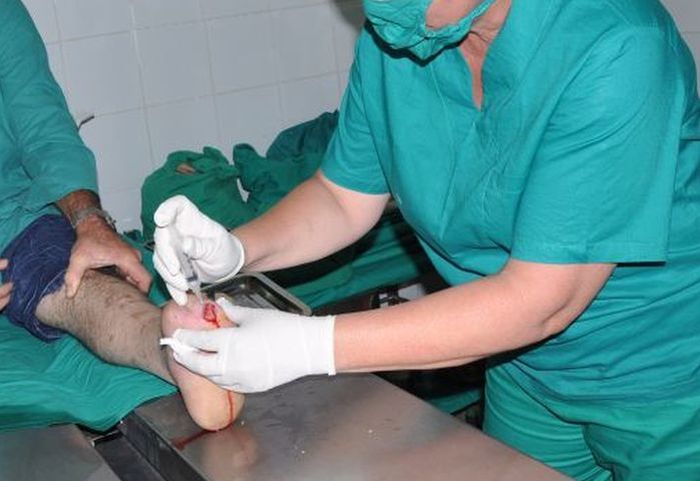
According to BioCubaFarma enterprise, it is hoped that the Cuban developed medication will soon be available for patients in the United States
Cuban enterprise Heber Biotec and U.S. company Mercurio Biotec have agreed to work together to make Heberprot-P —a Cuban developed medication to treat diabetic foot ulcers— available for patients in the U.S., once it has been approved by the country’s Food and Drug Administration (FDA).
Given the success of the product and following the Memorandum of Understanding signed between the United States Department of Health and Human Services and the Ministry of Public Health of the Republic of Cuba, on June 13, 2016, it is hoped that the Cuban developed medication will soon be available for patients in the United Sates, according to a press release by the BioCubaFarma enterprise.
Meanwhile, “The United States Department of the Treasury, Office of Foreign Assets Controls, authorized Mercutio Biotec to enter into agreements with the Center for Genetic Engineering and Biotechnology (CIGB), to conduct all transactions necessary to import Heberprot-P to conduct independent clinical trials authorized by the U.S. Food and Drug Administration (FDA),” according to the Mercurio Biotec website.
Almost one million U.S. citizens are diagnosed with diabetic foot ulcers (DFUs) ever year; a condition which increases the risk of lower-limb amputations. In just five years the number of people suffering from this condition in the U.S. has risen from 73,000 to 85,000, with a significant economic and social impact on the patient, their family members and healthcare system.
 Escambray ENGLISH EDITION
Escambray ENGLISH EDITION





Escambray reserves the right to publish comments.